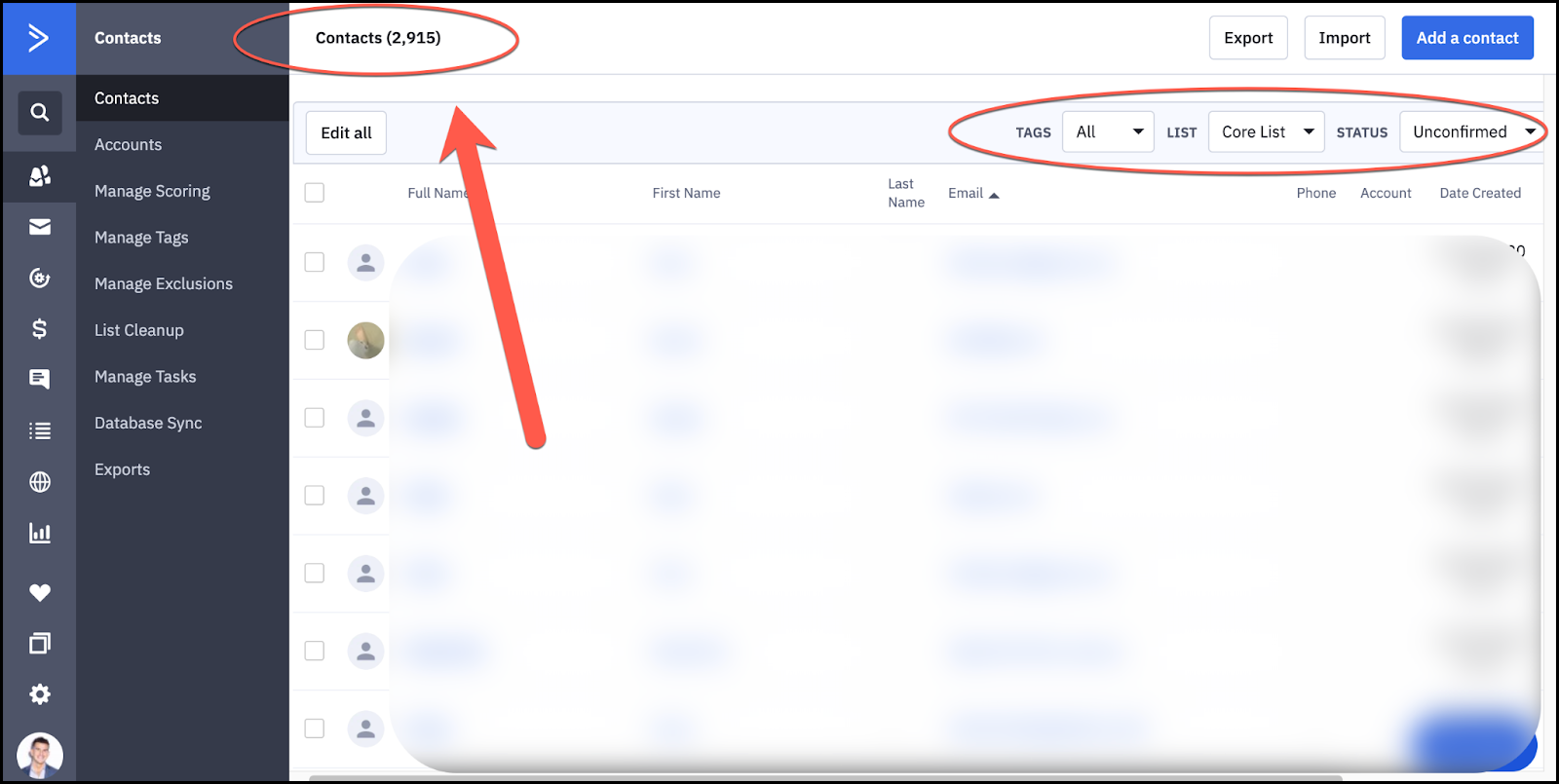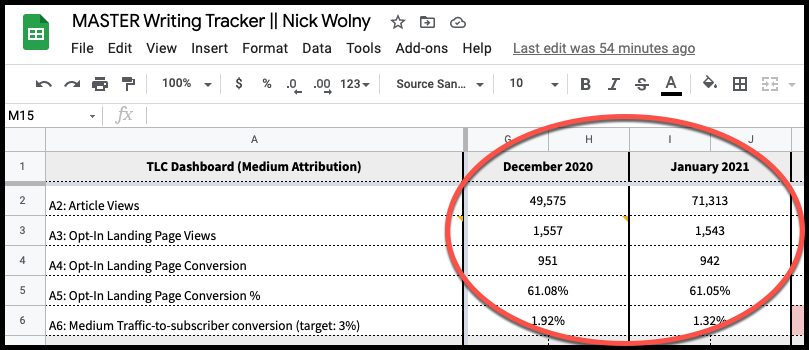THE ONLY 3 ARTICLE ANALYTICS I’M BOTHERING TO MEASURE IN 2021

Trixie Mattel, a contestant on season 7 of RuPaul’s Drag Race, has become one of the franchise’s most successful alums. Her coffee table book (Co-authored by comedy partner Katya Zamolodchikova) became a New York Times bestseller, the duo’s bonkers YouTube series led to a Netflix deal, and her wildly overpainted face — a commentary on the unrealistic facial proportions and beauty standards of barbie dolls — has birthed its own makeup line.
When discussing the show as a visibility platform, Trixie notes that
“The real race begins after the show has aired.”
She was referring to how well contestants leverage their national television airtime to grow their audiences. For the few weeks that the show airs, these drag queens have the eyes of millions, and they’ve become increasingly enterprising at capturing a slice of the fan base for themselves.
I’m reminded of Trixie’s comment because I have an article going viral at the moment. I wish I could tell you why… but I can’t.
Sure, the topic is controversial, the citations are interesting, and the opinions are stirring up conversation. But all in all, I’m not sure this piece is terribly different from other stuff I’m writing from week to week.
Virality is a lot like PR
Virality is a lot like PR in that it’s hard to predict or control. Also, you get your 15 minutes of fame, which is great… but then what? What happens after that? Like aspiring drag queens competing on a glitter-soaked reality show, post-exposure success hinges on what you’ve put together under the hood to help turn some of a platform’s “borrowed audience” into your audience.
When I look at my overall article-writing strategy, I take a more business-heavy approach than most, and I measure every data point I can get my hands on. But I only weigh a few of these points seriously when it comes to strategy and follow-through. These are the metrics I’m personally referencing on an ongoing basis to better determine what to write next.
#1: Traffic-to-subscriber conversion
When I first met Michael Thompson, I remember him saying to me “Oh wow, so you really filter all of this through the lens of business”. It’s true; articles and writing can be great creative outlets — it’s why I’m here — but I also like to tinker in my mad science lab around how articles can connect to other growth goals.
The biggest number I look at to quantify article effectiveness isn’t social proof, likes, or traffic, but rather email subscriber signup. Net email list growth is heavy on my mind in 2021 for a few reasons:
- Email forces me to create freebies or other crunchy downloadables that people actually want, and I find this benchmark is a good way to validate interest in ideas
- Email lets you try things out and segment your audience, and in early-stage entrepreneurship feedback is king
- Email lets you automate; I send thousands of emails a week and some of these emails are pieces I wrote months or years ago. Can’t do that on TikTok, sorry ‘bout it
This doesn’t mean I don’t appreciate readers and followers who don’t sign up for my list — I do! My focus is bringing readers who are especially into my flavor of writing (Business, PR strategy, kinda gay, lots of Beyoncé GIFs) over to my quiet corner of the internet so we can stand hip-to-hip and do this hand formation together.
I also lose a ton of people off the top because I have a double opt-in on my list. After a reader inputs their email address to download one of my freebies, I first send a request to confirm that the email address is correct before sending my freebie over.
I have literally lost thousands of potential subscribers this way. I checked just now, and I’m just shy of 3,000 unconfirmed email addresses, which means they didn’t confirm their address in order to get their freebie.

Screenshot from the author.
At first, it’s a little cringe-y. But if readers won’t even open the email that confirms their address… will they ever read anything else from me?
My guess is no. I’m here to grow, but also to do it from a place of quality.
#2: Landing page conversion
I’ve written about landing pages before. My landing pages are simple and convert at about 60%, which I’m pleased with.
Yoga guru Baron Baptiste has a saying I like: “Be happy AND unsatisfied”. So I’m always tinkering with little split tests like button color and imagery to see if I can drive these article analytic numbers up. This metric is similar to the previous one in that it gives me a feel for who is landing on this page and how interested they might be in my style of marketing in business.
Here’s an example: In December 2020 I wrote a longform piece about templates that did reasonably well and was really linear to my offer. In January 2021, I had a piece on personal development that did much better traffic-wise, but is not my usual lane.
My traffic increased by about 40% month-over-month, which would seem good. But in looking at this metric, the conversion was about the same.

Screenshot from the author.
Focus on growing your audience, but also ensure you’re getting in front of the right audience. A metric like this can help you determine how well you’re hitting the mark, as well as how much you might want to diversify your writing topics along the way.
#3: Limited-time offer (LTO) conversion
If you’ve downloaded a freebie of mine in the past, you know that I make a quick pitch on the thank-you page for a mini-course or workshop of mine (Depends on which article you read). There’s an option to get a discount on the mini-course if you decide to sign up right then and there. This is called a limited-time offer (LTO), and can be a great way to introduce readers to your methodology in a deeper way.
LTOs get a bad rap. Even I hated ’em for a while; they felt slimy and slippery to me. Over the years though, I’ve discerned that that feeling came not so much from the offer structure itself as it did from the personalities selling those offers. Being told once that I “would die cold, alone, and unloved” if I didn’t buy a $20 ebook was not only awful copy, but turned me off to funnel marketing strategies altogether for years.
Then I experimented with leveraging this approach in an ethical way — and was surprised at the outcome. In February 2021, for example, the purchase rate from my new subscribers was almost five percent. This number usually hovers between 2.5% and 4% for me.
It’s also fun to impulse-buy stuff that helps you fulfill on your goals. I don’t want to impulse-buy your $1,000 coaching package just yet, but I would impulse buy your book or your $50 mini-course to learn something new. Buying from various creators also helps me decide if their bigger offers are worth it something I want to pursue down the line.
When you’re writing for business, it can quickly become a numbers game. But simply knowing your numbers isn’t enough; you need to feel confident about which numbers should have your attention and dictate your next move. Dial-in how you want to grow as a writer or entrepreneur, then take action on what really matters each and every week.

